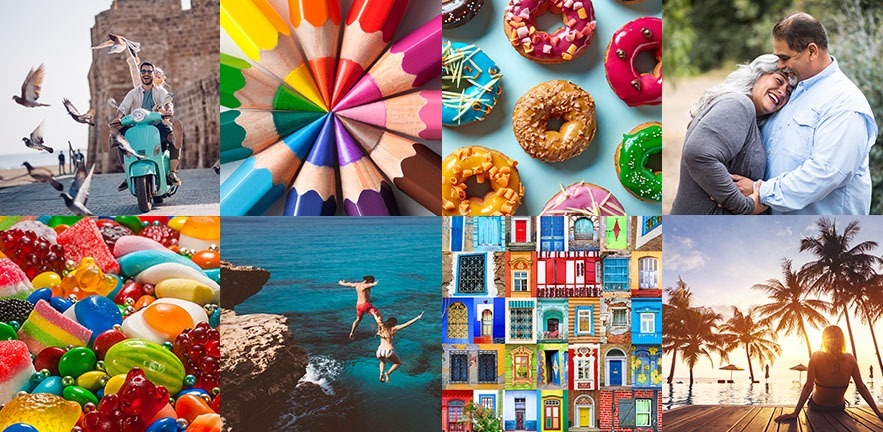Matching advertising images to personality traits can find the most suitable image for a particular customer and help win sales, finds a new study co-authored by Dr David Stillwell of Cambridge Judge Business School.

Consumers pay far more attention to images than words, so the people who design television commercials or print ads have long agonised over picking the perfect image.

But the shift from one-to-many mass communication to personalised one-to-one digital communication could soon pose the question: “What is the most appealing image for this particular consumer?” That’s the focus of a new study, co-authored by Dr David Stillwell of Cambridge Judge Business School, just published in the Journal of Consumer Psychology.
The study finds that by matching the features of images with personality traits, it is possible to find not only a suitable image for the general population but the most suitable image for a particular customer – and, importantly, this influences their purchasing intentions towards the brand behind such an image.
This “additional ‘personal touch’ could turn out to be crucial in building strong and successful long-term relationships with consumers,” says the study. “Making a company’s website or marketing campaign even a little bit more appealing than that of the competition might be the deciding factor in whether a consumer buys from one company or the other” – and this “could lead to meaningful gains” if matching images to personality is implemented at scale by multinationals and other big marketers.
“Marketers have always sought to personalise communication, but this usually focuses on what is communicated in terms of the product advertised or the element featured on a company’s website landing page,” says study co-author David Stillwell, University Lecturer in Big Data Analytics & Quantitative Social Science at Cambridge Judge Business School. “Our findings point out the big potential of customising how this content is communicated by matching images to personality.”
It’s long been known that some image characteristics have the widest appeal to average consumers (they favour cold colours and symmetrical compositions, for example), and demography narrows that down further (preference for saturated colours is stronger in men than women). Yet the study notes that demographic variables “very quickly reach their limits of discriminating between consumers in meaningful ways: it seems rather unrealistic to expect all women of a certain age to have the same aesthetic preferences.”
The study therefore goes beyond demographics to focus on psychological differences – as measured by the well-known Five Factor Model personality test that measures Openness, Conscientiousness, Extroversion, Agreeableness, and Neuroticism.
The first part of the study recruited 745 participants, and selected 1,040 professional images from image library Shutterstock.com taken from dozens of categories that include “nature”, “buildings” and “people”. Computer algorithms then extracted 89 features per each image, which are split into four main categories: colour (including hue, saturation and value), composition (such as density of edges, aspect ratio and blurring of background), texture (granularity, contrast and homogeneity) and content (focusing on nine popular objects such as cats, people, cars and bicycles).
In total, these participants gave 38,740 ratings on how much they liked the images, and then completed a 50-item Five Factor Model personality test.
In terms of personality characteristics: openness correlated positively (among other features) with the colours blue and black; conscientiousness with the colour red and the presence of at least one person; extroversion with the colour pink, low saturation, and sharpness in the inner part of the image; agreeableness with the use of light and the colours brown, green pink, purple, red and yellow; neuroticism with image size and aspect ratio, and the display of cats (while showing negative correlation with the colour brown and the presence of faces).
“This pattern suggests that people high in neuroticism prefer natural images and images with no people,” the study says. “This preference for calm and minimally stimulating scenes without people is in line with the general attributes of neuroticism, including envy, loneliness, anxiety, and fear.”
Later parts of the study recruited an additional 868 participants to evaluate images in the Shutterstock.com categories “holiday”, “beauty” and “phone” – and also evaluated the participants’ attitudes toward particular brands (“appealing/unappealing”) and their intent to purchase from those brands (“never/definitely”).
“The results demonstrate the value of using image-person fit by showing that people do not only like matching images more but also report more favourable attitudes and purchase intentions towards brands that use matching images,” the study says. “This spillover effect of image perceptions to brand perception is crucial for marketers who want to use the mechanism of image-person fit to increase not only the appeal but also the effectiveness of their marketing campaigns.”
The study – entitled “Predicting the personal appeal of marketing images using computational methods” – is co-authored by Sandra C. Matz of Columbia Business School; Cristina Segalin of the Department of Electrical Engineering at California Institute of Technology; David Stillwell of Cambridge Judge Business School; Sandrine R. Müller of the Psychology Department at the University of Cambridge; and Maarten W. Bos of Disney Research in Pittsburgh, Pennsylvania.

